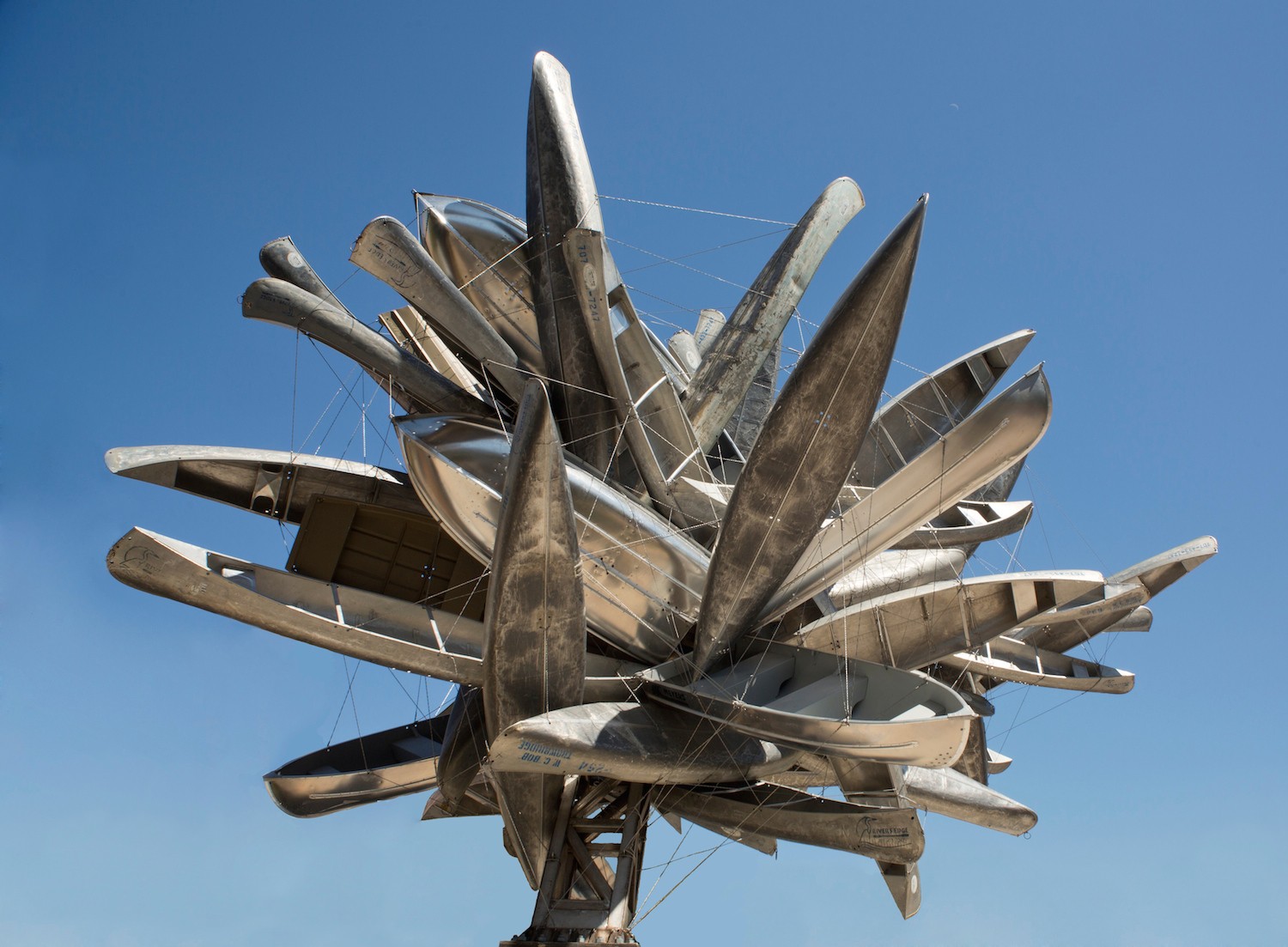
Nearly five years after Monochrome for Austin’s installation on campus — the sculpture of cantilevered, cascading canoes that suspends above Speedway in front of the Norman Hackerman Building — Landmarks, the public art program of The University of Texas at Austin, hosted a virtual event to explore the engineering behind its creation. The event streamed live on Facebook on June 24 and featured a panel of Monochrome artist Nancy Rubins, project engineer Jaime Garza (B.S. Architectural Engineering 2002), Cockrell School civil engineering professor Tricia Clayton and Cockrell School Dean Sharon Wood.
Monochrome for Austin is part of Rubins’ Monochrome series. The sculpture, similar to others in the series, boasts 70 recycled aluminum canoes and small boats clustered at the end of a listing column. The sheer size and mass of the structure is an engineering feat, and Rubins worked in close collaboration with Garza to ensure her vision was executed with the utmost safety and stability. Originally designed with the flexibility to be installed anywhere in the world, Monochrome for Austin was commissioned in 2015 by Landmarks for installation on The University of Texas at Austin campus.
“[Since we didn’t know where the piece would be installed], we did the best we could to anticipate extreme weather conditions when conceptualizing it,” Garza said during the event. “We designed for a really terrible earthquake, like something you might see in Chile or Japan. We designed for a hurricane you might see on the Gulf Coast. And, we designed for a populated town in a place where there might be a lot of snow. When we found out it was going to be installed on the UT Austin campus, we realized we could nearly double the amount of boats and increase the size because UT’s wind and fatigue loads weren’t as extreme as what we had originally allowed for.”
Once the building site was identified and the sculpture’s scale was adjusted accordingly, Rubins and Garza utilized the Norman Hackerman Building’s building code to track potential failures, signaling where provisions for the sculpture may be needed. One such adjustment was the addition of a 30-foot lightning rod which runs through the center of the sculpture’s supporting structure, designed to alleviate the potential damage of a Texas thunderstorm.
“It really shows the importance of learning theory and background,” Clayton said of the design process. “[Structural engineers] don’t just follow equations, but rather it’s an art. Every situation will be more complex than what may have been envisioned in building codes.”
What rests now at the corner of 24th Street and Speedway is described by Clayton as “visual physics,” or the manifestation of a dialogue between art and engineering. Landmarks has a robust conservation team that ensures the sculpture is power-washed at least two to three times per year, in addition to routine inspections to guarantee sustained safety.
Although, as Garza said, the structure is built to last for decades.
“This is truly a perfect sculpture for UT Austin,” said Dean Wood. “I have full faith in its engineering, and think it showcases what it means to be a Texas Engineer.”







